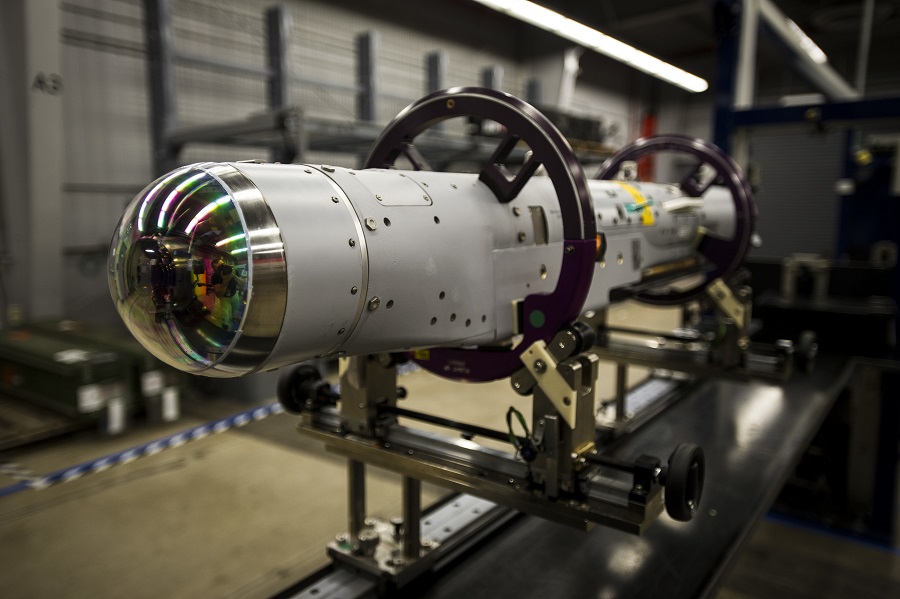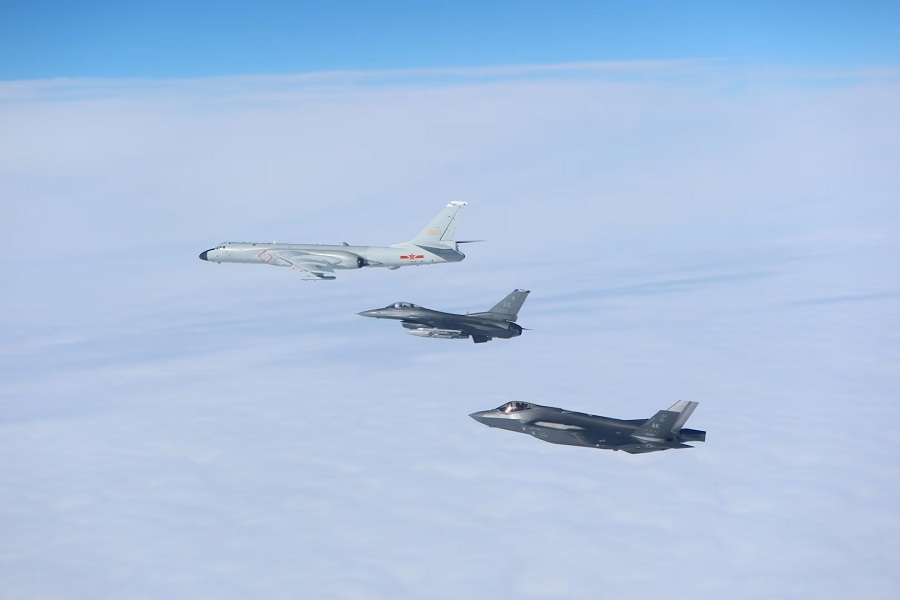Over the past three decades, remotely piloted aircraft (RPAs) – also known as drones – have acquired increasing importance in modern warfare. Originally designed to perform surveillance missions during the Cold War, drones gained prominence during the post-Cold War era through their ability to gather real-time intelligence over conflict-prone areas, particularly in support of humanitarian interventions. Following the onset of the global war on terror drones acquired a further, arguably more significant function: armed with precision-guided munitions, they enabled Western armed forces to identify, track, and accurately strike targets from afar, reducing the need for troops on the ground.1 Simultaneously, drones’ allegedly low costs, limited technological sophistication, and ease of employment also enabled their rapid proliferation to dozens of countries around the world.2 According to some, the major implications are yet to come: drones’ unique capabilities promise in fact to revolutionize warfare. Consequently, militaries could eschew complex and expensive force structures to wage war: they would just need drones. As countries face stronger incentives and fewer constraints for using force, the growing availability of drones coupled with their capabilities deserve attention because this trend risks ushering in a new era of global instability and conflict.3
A drone revolution in military affairs?
From the Balkans to Afghanistan, Iraq to Yemen, Pakistan to Ukraine, remotely piloted aircraft have been widely and increasingly employed for combat and non-combat missions. The growing importance of drones is thus unquestionable; that drones have revolutionized warfare, however, remains open to debate.4 Skepticism is warranted. Warfare is an adversarial contest between adaptive contenders looking to exploit one another’s weaknesses, and over the past century, warfare has undergone a series of smaller, adaptive evolutions rather than a set of major revolutions.5 Revolutions are more the exception than the rule, and thus a drone revolution would be a rare phenomenon. In response, this Policy Brief advances a simple analytical framework with two objectives: first, to set clear thresholds that determine what counts as an evolution rather than a revolution, and second, to assess their respective empirical standing. Evidence from the use of drones in recent wars in Libya, Syria and Nagorno-Karabakh suggest that a military revolution has not occurred. While current-generation drones offer new advantages, they remain vulnerable to air defenses and electronic warfare. Additionally, drones proved effective in these conflicts only when employed by skilled, well-equipped armed forces fighting against significantly weaker adversaries. When enemies deployed advanced air-defense systems, drones’ effectiveness shrank. Similarly, drones neither reversed battlefield imbalances nor gave their users a war-winning capability alone, i.e. without troops on the grounds. Based on lessons from these conflicts, radical transformations of existing Western force structures seem unwarranted.
The hider-finder competition
Air warfare is a competition. It pits attacking aircraft attempting to penetrate an airspace against defenders utilizing air defense systems (primarily ground-based anti-air batteries) to try to deny access. Air warfare first emerged during World War I, but major changes to the nature of air power occurred from the 1960s onwards, when improvements in detection, communications, precision and firepower led to an era of “new lethality” that endures to this day. In this era, all platforms are vulnerable to enemy fire, meaning both aircraft and air defense systems must simultaneously hide from enemy sensors (to avoid being destroyed) while also looking for enemy targets (to destroy). However, there is a tension between hiding and searching: too much hiding and one risks missing the target, too much searching and one is exposed to enemy lethality.6 As in land combat, both air penetration and air defense missions are extremely difficult as they require proficiency and coordination between multiple types of platforms and capabilities.7 Given the accuracy and lethality of modern sensors and munitions, even small mistakes expose platforms to enemy firepower, with negative implications for a mission or an entire campaign. For this reason, the hider-finder competition can only be won by mastering a series of tactics, techniques, procedures and technologies which minimize one’s own weaknesses while exploiting the enemy’s vulnerabilities.8
Some suggest that drones are revolutionizing warfare. If this is the case, these systems should be able to cancel out this decade-long hider-finder competition in air warfare. If they do not, then no revolution is occurring. In practical terms, a revolution in air warfare means that drones should easily penetrate enemy air defenses; should enjoy battlefield effectiveness without extensive support from other platforms, technologies, capabilities and skilled operators;9 and finally, if drones are truly bringing about a transformation of warfarewe should find that close combat is becoming increasingly obsolete, i.e. that actors can achieve their military objectives without fighting on the ground.10
The Western Libya military campaign of the second Libyan Civil War (2019-2020), the Syrian civil war (2011-2021), and the Armenian-Azerbaijani conflict over Nagorno-Karabakh (2020) are perfect testbeds to assess these claims. To date, these conflicts have observed the largest and most intensive employment of
drones in history. If there is no evidence of a revolution in these cases, skepticism is justified.
To that end, the empirical record hardly suggests that a drone revolution in military affairs is taking place: in these conflicts. Drones proved vulnerable to enemy air defenses. Their battlefield contributions in these campaigns depended on support from traditional force structures. Overall, far from being remotely-waged wars, these conflicts observed extensive ground combat.
The campaign for Western Libya
In 2019, the Libyan civil war reignited when the Government of National Accord (GNA) and the Libyan National Army (LNA) clashed over control of Western Libya and the capital city of Tripoli. Between April 2019 and November 2019, the conflict observed over 1,040 recorded drone strikes, prompting the UN Special Representative to Libya to talk of “the largest drone war in the world”.11 Despite the intensive employment of RPAs, the empirical record does not corroborate the account of a drone revolution in military affairs: drones did not yield an offensive advantage, they did not level the playing field, and they did not eliminate the need for close combat.
First, in the campaign for Western Libya, drones proved unable to penetrate enemy air defense systems.
Evidence indicates that the GNA lost twenty-two of its twenty-four drones in operations, while the LNA lost between one-third and one-half of its drones. Attrition rates among these combat drones correlated with the presence and capabilities of the adversaries’ air defense systems: when air defense systems were present and working, enemy drones were systematically shot down. In other words, drones could operate with impunity only within non-segregated airspaces, i.e. like any normal aircraft.12
Second, rather than levelling the playing field, drones favoured the stronger side in the conflict. In the first part of the campaign, the LNA was the stronger actor, thanks mainly to logistical and infrastructural support provided by Egypt and the United Arab Emirates (UAE). Later, when the GNA was provided with its own drones, electronic warfare systems, short air defense systems and infantry units, the tide turned in its favour and drone operations proved more successful.13
Syrian civil war
Since 2011, the Syrian Civil War has witnessed combat between a plurality of actors, each with their own political objectives: the Syrian government, Russia and Iran have fought loosely together against the Islamic State in Iraq and Syria (ISIS) and Jabhat al-Nusra; Türkyie has engaged against Kurdish groups; and the US-led coalition has fought against ISIS. Within this complex military context, drones were extensively employed, with some describing the conflict as “the most drone-dense conflict to date”.14 For this reason, many saw the Syrian Civil War as a glimpse into a potential future of war led by the use of drones. The evidence, however, does not lend support for this vision.
First, as in Libya, drones were “dropping like flies from the sky”, with air defense systems systematically shooting down RPAs. Second, rather than levelling the playing field, drones generally strengthened major actors. Both the US and Türkyie employed their drones to great effect against their adversaries; conversely, drones employed by the Syrian government, ISIS and the Kurds hardly proved effective in improving these groups’ battlefield fortunes. Finally, close combat, which should have been less necessary in this new age of drones, remained the dominant form of combat throughout the entire conflict. In fact, the Syrian Civil War was largely characterized by a continuous cycle of infantry-based advances, sieges, frontal clashes, retreats, and counteroffensives, as was the case in battles over Damascus, Walamous, al-Yaarybiyah, Aleppo, Idlib, Yarmouk, and Raqqa. While long-range fires were extensively employed, these occurred not through precision drone attacks but rather indiscriminate ground-based artillery shelling.
Nagorno-Karabakh
Fought during the autumn of 2020, Armenia and Azerbaijan’s “44 Day War” saw extensive use of drones and loitering munitions, again prompting many to claim that drones “owned the battlefield in Nagorno-Karabakh”.15 Yet the empirical record is much more ambivalent.
In Nagorno-Karabakh, Azerbaijan employed the exact same types of drones used in Libya, where these systems were less effective. Logically speaking, Azerbaijan’s more successful use in Nagorno-Karabakh cannot lie in these drones’ inherent features. Instead, we see that in Nagorno-Karabakh, Armenia lacked a layered and integrated air-defense network capable of addressing multiple threats at various ranges. Moreover, they lacked skilled and proficient personnel to man their air defense systems and did not possess modern surface-to-air missile batteries which, by extension, were unable to detect smaller targets.
Rather than acting as an equalizer in this case, drones actually bolstered the stronger party, Azerbaijan. Baku could count not only on more robust and professional armed forces but also on the support of Türkiye in terms of electronic warfare systems, aircrafts for target acquisition, short-range air defense systems, and other military assets.16 Armenia, conversely, received little external support.
Finally, despite Azerbaijan’s proficiency, drones did not eliminate the need for ground combat. In fact, the conflict saw extensive employment of infantry, armor, special forces and mercenaries on the ground. The Battle for Shusha City is a case in point. “The most important battle of the Nagorno-Karabakh war” was in fact a land battle: “once Shusha fell, Armenia surrendered and entered a lopsided agreement, ceding massive amounts of their previously held territories”.17
Battlefield contribution of drones
Evidence of drone use in recent conflicts does not support the claim that drones are a “magic bullet”, a “tactical game changer”,18 or that they could soon “help decide the fate of nations”.19 Time will tell whether, in the future, major changes in the design and production of drones will change this current reality. Presently,
however, drones do not yield a decisive offensive advantage, have not levelled the playing field between strong and weak states, and have not rendered close combat obsolete.
This does not mean, however, that drones are irrelevant. When integrated with other multi-layered and conventional military systems and operated by skilled and proficient personnel, RPAs provide important battlefield contributions that should not be ignored. Thus far, preliminary evidence of drone use during the war in Ukraine corroborates this assessment.
The above analysis suggests that a radical restructuring of national armed forces towards cheap and small robotic platforms is unwarranted. Instead, recent conflicts point to the need for further investment in traditional military capabilities including air defense, electronic warfare, and their related infrastructures (command, control and communications). This is particularly important for NATO Allies, given existing capability gaps in these domains. Recent conflicts also highlight the importance of a skilled and trained work-force: drones and air defense capabilities cannot deliver battlefield effects if employed by personnel lacking in proficiency.20 Finally, the role of external actors, including Russia, Türkiye and the United Arab Emirates in Libya, Syria and Nagorno-Karabakh, demonstrates that endowing local allies with air defense systems and electronic warfare suites may be an extremely effective strategy to rebalance an ongoing conflict in which drones are used to support an offensive operation. At a time when NATO seems less keen to deploy crisis management and direct out-of-area interventions, this seems an important lesson from recent wars.
In the years ahead, military planners and policymakers should look at three major issues. Small drones (i.e., toy-like commercial systems) are likely going to gain salience: they will not revolutionize warfare but will further increase the lethality of the battlefield, as seen in Ukraine. Counter-drone systems will grow in number and capabilities. NATO Allies are already working on this, but additional investments are likely needed.
Finally, ground and maritime drones will acquire more importance. There is no reason to expect a revolution in these domains, but integrating these systems into existing force structures will require extensive experimentation to devise the appropriate techniques, tactics and procedures – just like in the air domain.
1 R. Whittle, Predator: the secret origins of the drone revolution, Picador, New York, 2014.
2 M. Fuhrmann and M. C. Horowitz, “Droning on: explaining the proliferation of unmanned aerial vehicles”, International Organization, Vol.71, No.2, 2017, pp. 397-418.
3 C. Coker, Warrior geeks: how 21st century technology is changing the way we fight and think about war, Hurst, London, 2013.
4 This Policy Brief is partly based on A. Calcara, A. Gilli, M. Gilli, R. Marchetti, and I. Zaccagnini, “Why drones have not revolutionized war: the enduring hider-finder competition in air warfare”, International Security, Vol.46, No.4, Spring 2022, pp.130-171.
5 S. Biddle, “The past as prologue: assessing theories of future warfare”, Security Studies, Vol.8, No.1, 1998, pp.1-74.
6 J. Brungess, Setting the context: suppression of enemy air defenses and joint war fighting in an uncertain world, Maxwell AFB, Air University Press, 1994.
7 S. Biddle, Military power: explaining victory and defeat in modern battle, Princeton University Press, 2004.
8 A. Gilli and M. Gilli, “The diffusion of drone warfare? Industrial, organizational, and infrastructural constraints”, Security Studies, Vol.25, No.1, Spring 2016, pp.50-84.
9 A. Stein, “Say hello to Turkey’s little friend: how drones help level the playing field”, War on the Rocks, 11 June 2021.
10 T. X. Hammes, “Droning America: the tech our enemies can buy”, War on the Rocks, 8 October 2013.
11 G. Salamé, Security Council meeting No.8667, 18 November 2019. G. Salamé, Security Council meeting No.8667, 18 November 2019.
12 F. Gady, “Useful, but not decisive: UAVs in Libya’s civil war”, The International Institute for Strategic Studies, 22 November 2019.
13 A. Stein, op. cit.
14 D. Gettinger, Drones operating in Syria and Iraq, Center for the Study of the Drone, Bard College, Annandale-on-Hudson, NY, December 2016, pp. 14-15.
15 R. Dixon, “Azerbaijan’s drones owned the battlefield in Nagorno-Karabakh and showed the future of warfare”, The Washington Post, 11 November 2020.
16 G. Gressel, “Military lessons from Nagorno-Karabakh”, European Council on Foreign Relations, 24 November 2020.
17 J. Spencer and H. Ghoorhoo, “The battle of Shusha City and the missed lessons of the 2020 Nagorno-Karabakh War”, Modern War Institute, 14 July 2021.
18 D. Hambling, “‘The magic bullet’ drones behind Azerbaijan’s victory over Armenia”, Forbes, 10 November 2020; A. Mgdesyan, “Drones a game changer in Nagorno-Karabakh”, Eurasia Review, 2 November 2020.
19 A. Callamard and J. Rogers, “We need a new international accord to control drone proliferation”, Bulletin of Atomic Scientists, 1 December 2020.
20 A. Asoni, A. Gilli, M. Gilli and T. Sanandaji, “A mercenary army of the poor? Technological change and the demographic composition of the post-9/11 US Military”, Journal of Strategic Studies, Vol.45, No.4, 2022, pp.586-614.
This article was originally published on NATO Defense College website in “NDC Policy Brief” series (No.17 – October 2022).

























